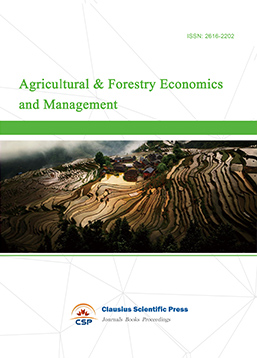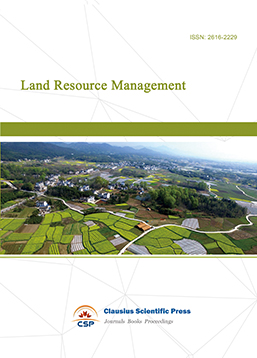The Potential Dominance of Renminbi as an International Reserve Currency
DOI: 10.23977/infse.2024.050101 | Downloads: 60 | Views: 1492
Author(s)
PANG Ho Lam Alex 1
Affiliation(s)
1 School of Finance, Shanghai University of Finance and Economics, Shanghai, China
Corresponding Author
PANG Ho Lam AlexABSTRACT
The spread of the global corona virus and geopolitical risks in recent years have directly led to the short-term economic recession in the United States. The Biden government's fiscal deficit and national debt have repeatedly hit record highs, which are likely to cause inflation and price fluctuations. This study focus on the key nature of the international reserve currency and its trend of excessive privilege of the US dollar whilst facing the economic rise of China. Through the macro-control plan of the New Silk Road, the Renminbi is gradually consolidating and developing emerging economic and trade regions in Southeast Asia and Central Asia. This paper also analysis the opening of China's financial market and the continuous inflow of foreign capital, it is expected to increase the use of the Renminbi, and it is predicted that the Renminbi will replace the British pound and the Japanese yen in 2030 and become the world's third largest foreign exchange reserve currency. But even if China is accelerating the implementation of digital Renminbi, the major difficulty of replacing the US dollar lies in the Chinese government itself, i.e., the monetary policy and the number of restrictions that apply on its currency circulation.
KEYWORDS
Renminbi, international reserve currency, internationalizationCITE THIS PAPER
PANG Ho Lam Alex, The Potential Dominance of Renminbi as an International Reserve Currency. Information Systems and Economics (2024) Vol. 5: 1-8. DOI: http://dx.doi.org/10.23977/infse.2024.050101.
REFERENCES
[1] Waltz, K. N. Theory of international politics. Waveland Press, 2010.
[2] Waltz, K. N. The emerging structure of international politics. International security, 1993: 18(2), 44-79.
[3] Waltz, K. N. International politics is not foreign policy. Security Studies, 1996: 6(1), 54-57.
[4] Mearsheimer, J. J. The gathering storm: China's challenge to US power in Asia. The Chinese journal of international politics, 2010: 3(4), 381-396.
[5] Mearsheimer, J. J. China's unpeaceful rise. Current History-New York Then Philadelphia-, 2006: 105(690), 160.
[6] Mearsheimer, J. J. Can China rise peacefully? The National Interest, 2014: 25(1), 1-40.
[7] Pope, R. Beggar‐Thy‐Neighbour Exchange Rate Regime Misadvice from Misapplications of Mundell (1961) and the Remedy. World Economy, 2009: 32(2), 326-350.
[8] Engler, P., & Tervala, J. Beggar-thyself or beggar-thy-neighbour? The welfare effects of monetary policy. Economic Modelling, 2011: 28(4), 2034-2040.
[9] Gilpin, R. The political economy of international relations. Princeton University Press, 2016.
[10] Guo, B. C. A Study on the Internationalization of Renminbi from the Perspective of Monetary Power [Dissertation]. Nankai University, 2017.
[11] Strange, S. The politics of international currencies. World Politics, 1971: 23(2), 215-231.
[12] Triffin, R. The evolution of the international monetary system: Historical reappraisal and future perspectives. International Finance Section, Department of Economics, Princeton University. 1964: 48.
[13] Huang, R. L., & Huang, Z. P. The Revived Bretton Woods System and China's Countermeasures. Jiangsu Administrative College Journal, 2007(06), 52-57.
[14] Aizenman, J., Chinn, M. D., & Ito, H. The "impossible trinity" hypothesis in an era of global imbalances: Measurement and testing. Review of International Economics, 2013: 21(3), 447-458.
[15] Pozsar, Z. Institutional cash pools and the Triffin dilemma of the US banking system. Financial Markets, Institutions & Instruments, 2013: 22(5), 283-318.
| Downloads: | 21422 |
|---|---|
| Visits: | 587860 |
Sponsors, Associates, and Links
-
Accounting, Auditing and Finance

-
Industrial Engineering and Innovation Management

-
Tourism Management and Technology Economy

-
Journal of Computational and Financial Econometrics

-
Financial Engineering and Risk Management

-
Accounting and Corporate Management

-
Social Security and Administration Management

-
Population, Resources & Environmental Economics

-
Statistics & Quantitative Economics

-
Agricultural & Forestry Economics and Management

-
Social Medicine and Health Management

-
Land Resource Management

-
Information, Library and Archival Science

-
Journal of Human Resource Development

-
Manufacturing and Service Operations Management

-
Operational Research and Cybernetics


 Download as PDF
Download as PDF